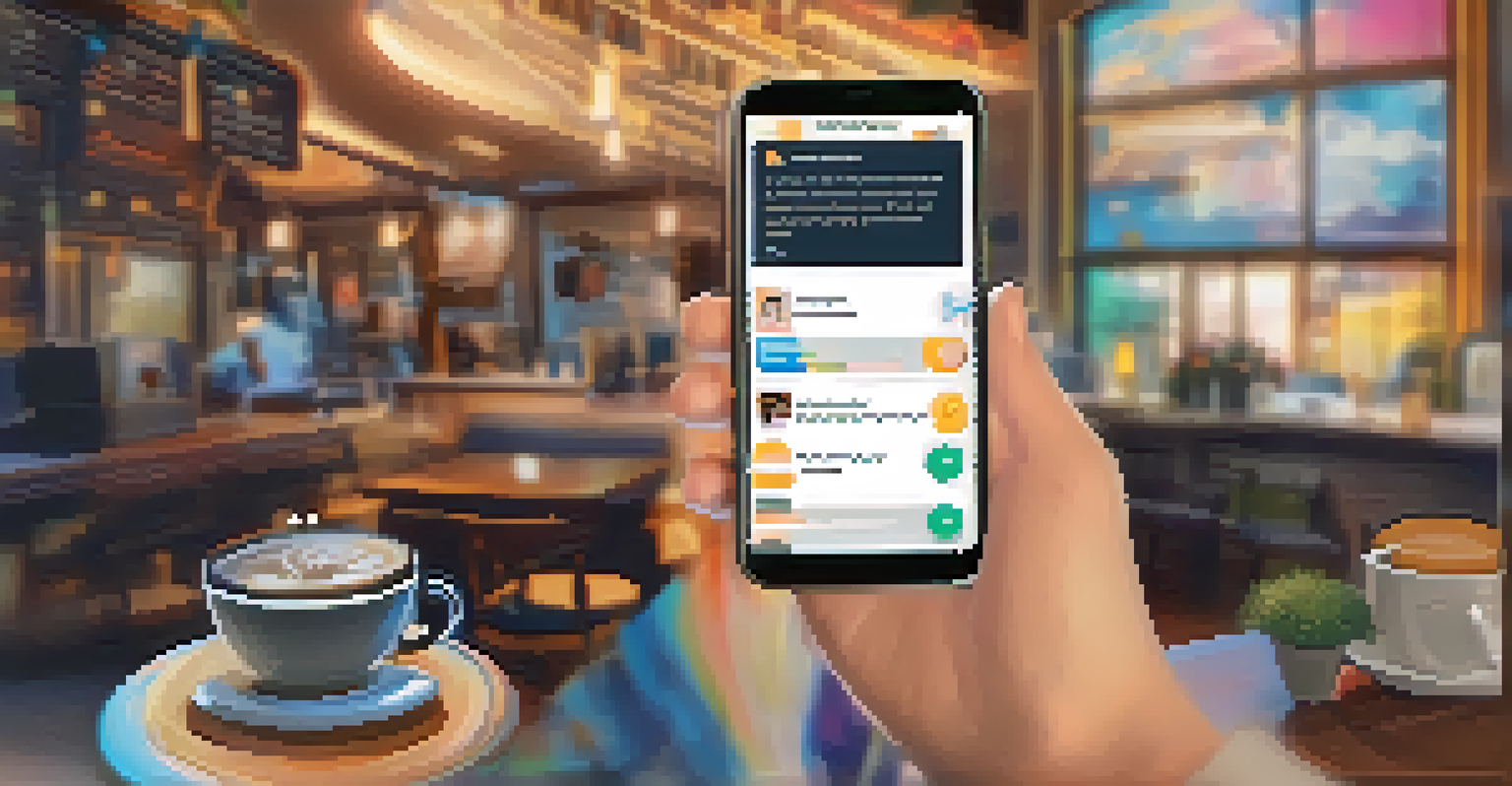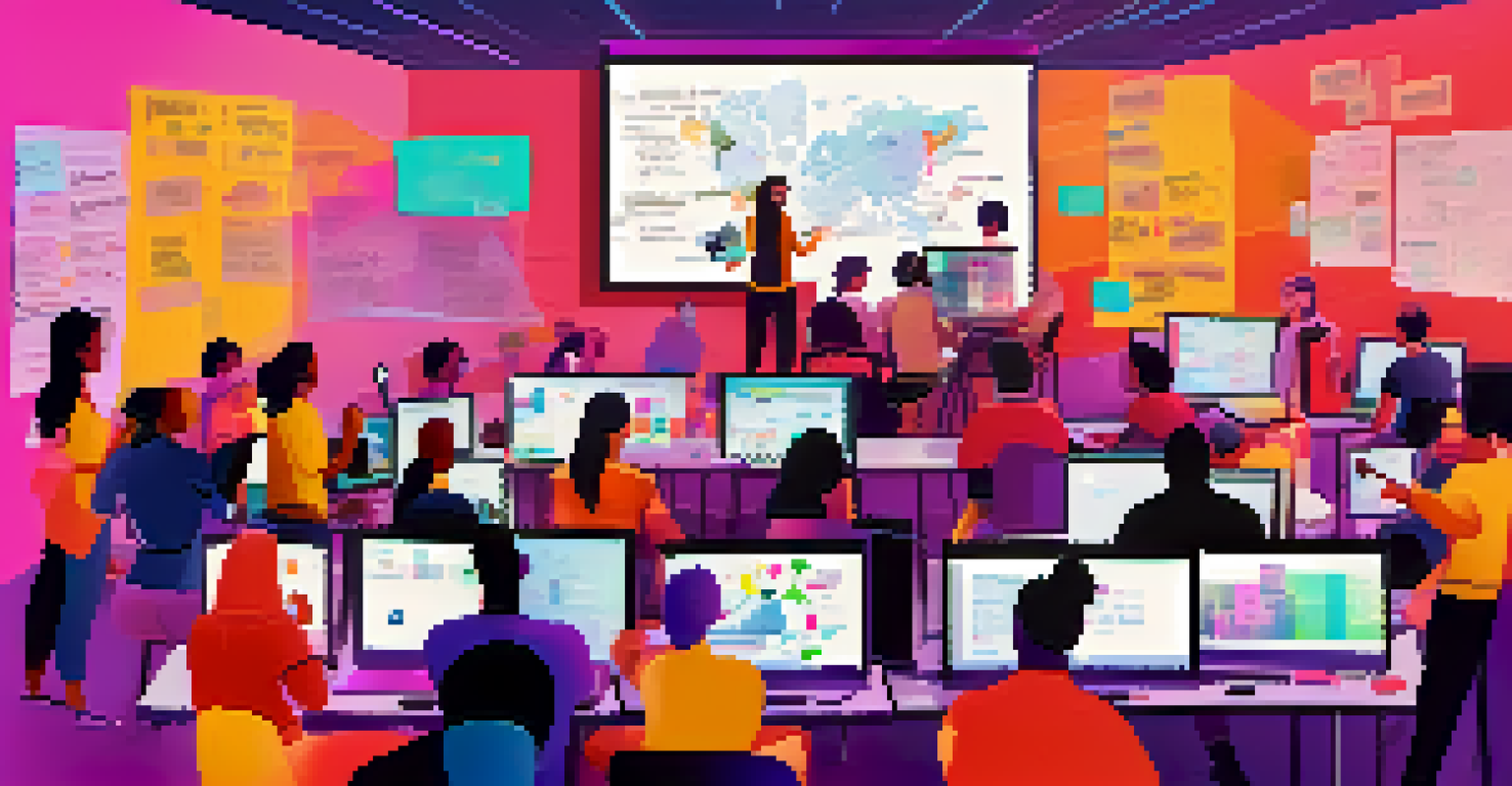Crowdsourcing Ideas: How Tech Drives Community Solutions

Understanding Crowdsourcing: What It Is and Why It Matters
Crowdsourcing is the practice of soliciting ideas, services, or content from a large group of people, often via the internet. It harnesses the collective intelligence and creativity of a community, allowing diverse perspectives to shape solutions. This approach not only democratizes the problem-solving process but also fosters a sense of ownership among participants.
The greatest innovations and ideas come from collaboration and the power of the crowd.
In today's fast-paced world, technology plays a pivotal role in enabling crowdsourcing. Platforms like social media and dedicated apps make it easier than ever for individuals to contribute their ideas and insights. This accessibility means that anyone, regardless of their background, can participate in discussions and contribute to meaningful solutions.
Ultimately, crowdsourcing empowers communities to tackle challenges collaboratively. When people come together to share their thoughts, the result is often more innovative and effective than solutions generated by a single entity or organization.
How Technology Facilitates Idea Generation
Technological advancements have significantly streamlined the idea generation process. Online platforms allow users to submit their ideas, vote on others, and provide feedback, creating a dynamic environment for brainstorming. For instance, websites like IdeaScale and Crowdicity enable users to collaborate in real-time, enhancing creativity and engagement.

Moreover, these platforms often utilize algorithms to highlight trending ideas and prioritize them based on community interest. This means that the best suggestions can rise to the top, ensuring that the most relevant and innovative concepts gain visibility. In this way, technology not only facilitates but also accelerates the process of idea generation.
Crowdsourcing Empowers Communities
Crowdsourcing harnesses the collective intelligence of communities, enabling diverse perspectives to collaboratively tackle challenges.
As a result, communities can quickly pivot and adapt to challenges, leveraging the collective wisdom of their members. This ability to harness a wide array of perspectives is particularly valuable in addressing complex issues that require multifaceted solutions.
Real-World Examples of Crowdsourced Solutions
Several organizations have successfully employed crowdsourcing to tackle various challenges. For example, the city of San Francisco launched a platform called 'SF OpenBook,' where residents can propose and vote on ideas for city improvements. This initiative has led to numerous projects, from park revitalizations to traffic management solutions, driven by community input.
Alone we can do so little; together we can do so much.
Another notable example is the 'NASA's SpaceApps Challenge,' an international hackathon that invites individuals to create solutions for problems related to space and Earth. Participants from diverse backgrounds collaborate to develop applications, visualizations, and hardware that address real-world issues, showcasing the power of collective innovation.
These examples illustrate how crowdsourcing can lead to tangible improvements in communities, demonstrating that when technology connects people, the possibilities are endless. Such initiatives not only solve specific problems but also strengthen community bonds.
The Role of Social Media in Crowdsourcing Ideas
Social media has revolutionized the way communities connect and collaborate on ideas. Platforms like Twitter, Facebook, and Instagram allow users to share their thoughts and engage in discussions instantly. This immediate feedback loop encourages creativity and can lead to the rapid evolution of ideas.
Additionally, social media campaigns can mobilize support for specific issues, amplifying voices that might otherwise go unheard. For instance, hashtags can rally communities around causes, making it easier to gather ideas and solutions from a wider audience. This viral potential is one of the key strengths of using social media for crowdsourcing.
Technology Boosts Idea Generation
Advancements in technology facilitate real-time collaboration and idea sharing, making it easier for communities to generate innovative solutions.
However, it's important to navigate the challenges of misinformation and echo chambers that can arise on these platforms. By fostering open dialogue and encouraging respectful discourse, communities can leverage social media as a powerful tool for generating innovative solutions.
Challenges and Limitations of Crowdsourcing
While crowdsourcing offers numerous benefits, it also comes with its set of challenges. One major concern is the quality of ideas submitted; not all contributions will be well-researched or feasible. To combat this, platforms can implement moderation processes to ensure that only the most viable ideas are considered.
Another challenge is the potential for groupthink, where individuals conform to popular opinions rather than offering unique perspectives. Encouraging diversity of thought and creating an inclusive environment can help mitigate this risk. This means actively seeking out underrepresented voices and promoting a culture of open-mindedness.
Lastly, the logistics of implementing crowdsourced ideas can be daunting. Organizations may struggle with how to integrate community suggestions into their existing frameworks. However, with the right strategies and commitment, these challenges can be overcome, paving the way for impactful community-driven solutions.
The Future of Crowdsourcing in Community Solutions
As technology continues to evolve, the future of crowdsourcing looks promising. Emerging technologies, such as artificial intelligence and blockchain, have the potential to enhance the crowdsourcing process. For instance, AI can analyze large volumes of ideas and identify patterns, while blockchain can ensure transparency and trust in the contributions made.
Moreover, as remote work becomes more prevalent, the ability to collaborate online will only grow. This shift allows for even more diverse participation from individuals across the globe, enriching the idea pool and sparking innovation. The interconnectedness brought about by technology is set to redefine community engagement.
Social Media Amplifies Voices
Social media serves as a powerful tool for crowdsourcing by allowing users to share ideas quickly and mobilize support for various causes.
Ultimately, the future holds exciting possibilities for crowdsourcing. By embracing these advancements, communities can harness collective intelligence to address challenges more effectively and create lasting change.
How to Get Involved in Crowdsourcing Initiatives
Getting involved in crowdsourcing initiatives is easier than ever. Individuals can start by exploring local organizations or online platforms that encourage community participation. Whether it's a city council seeking input on new policies or a nonprofit looking for innovative solutions, there are countless opportunities to contribute your ideas.
Additionally, participating in hackathons or idea challenges can be a great way to engage with like-minded individuals. These events often bring together people from diverse backgrounds, fostering collaboration and creativity. Plus, they provide a platform to see your ideas come to life and make a real impact.

Finally, don’t underestimate the power of sharing your thoughts on social media. By voicing your ideas and engaging with others in discussions, you can contribute to the larger conversation and inspire change within your community. Every voice counts, and your input could be the spark that ignites a transformative solution.